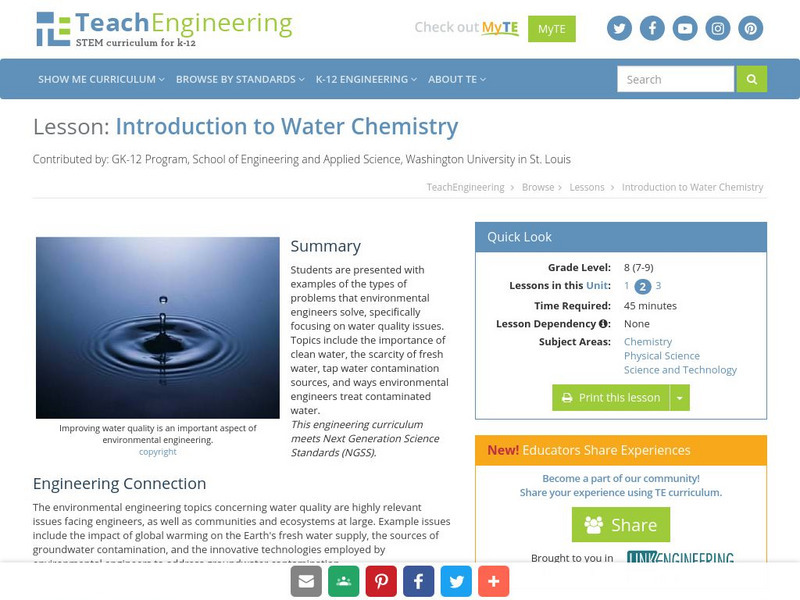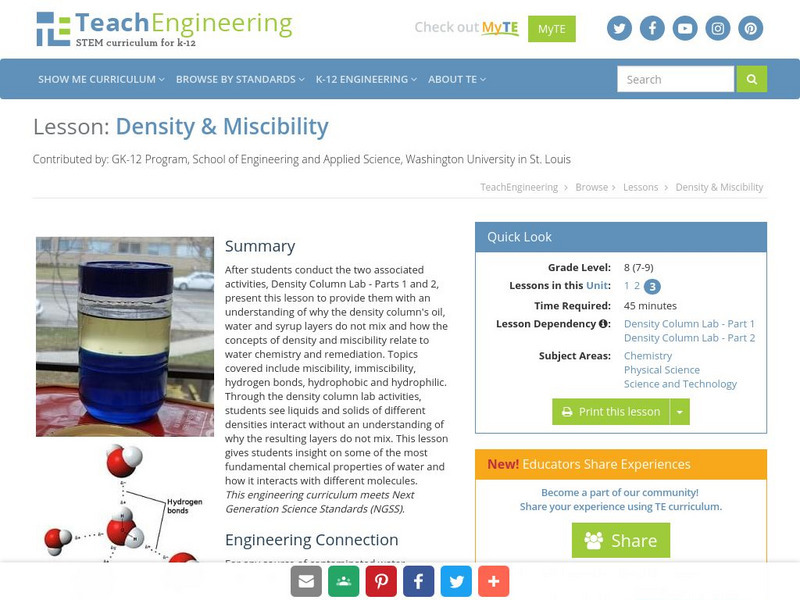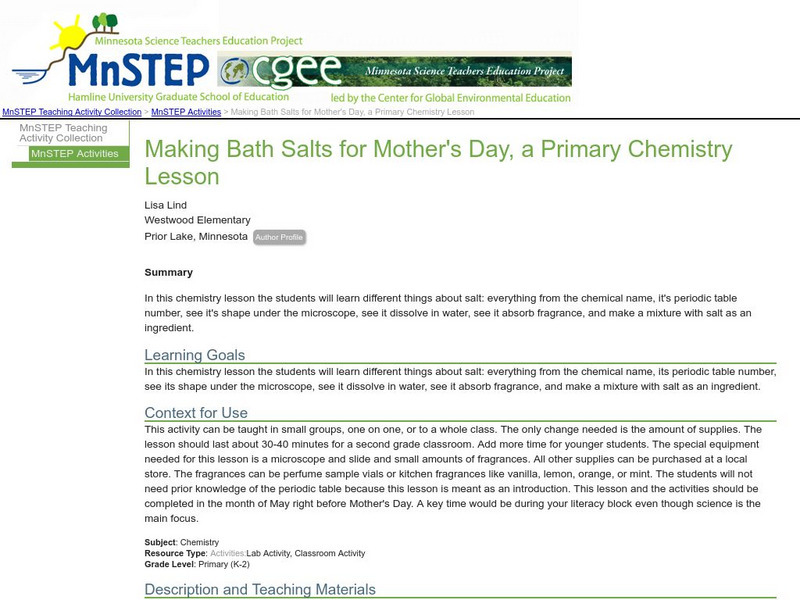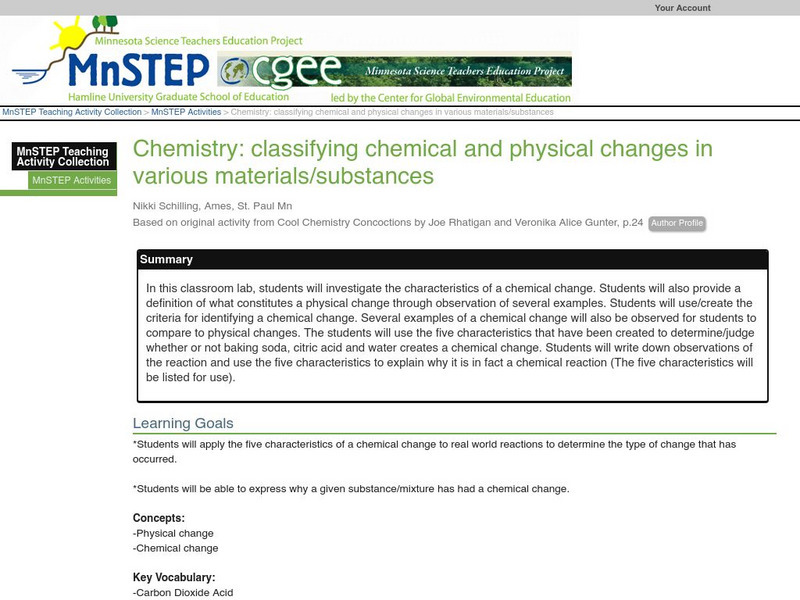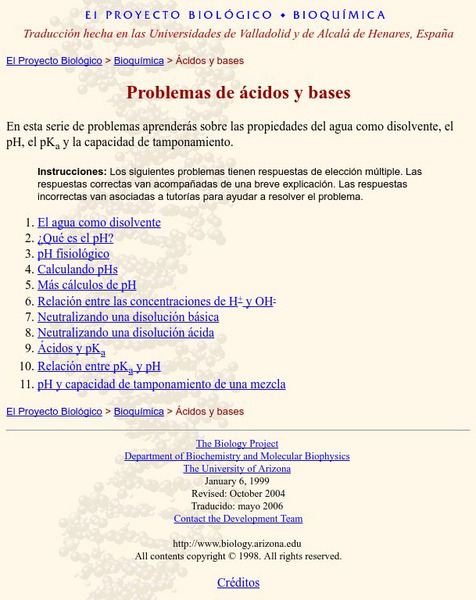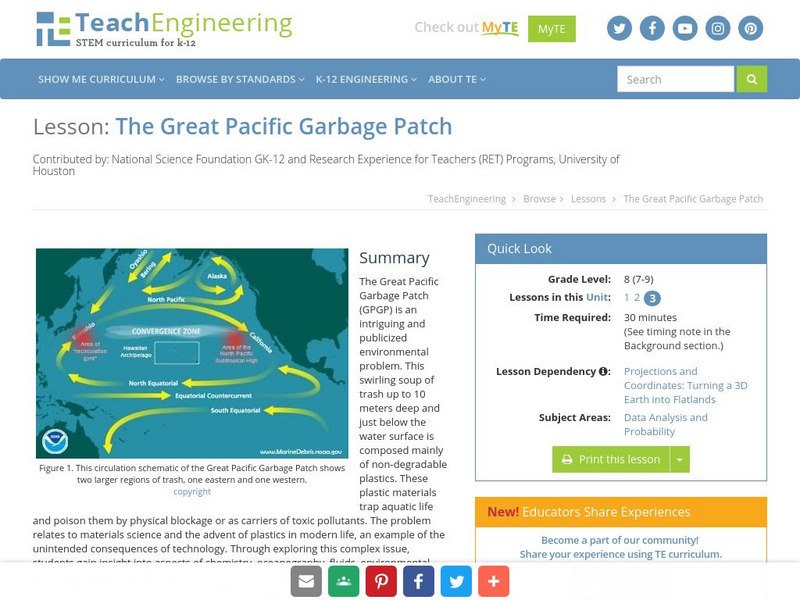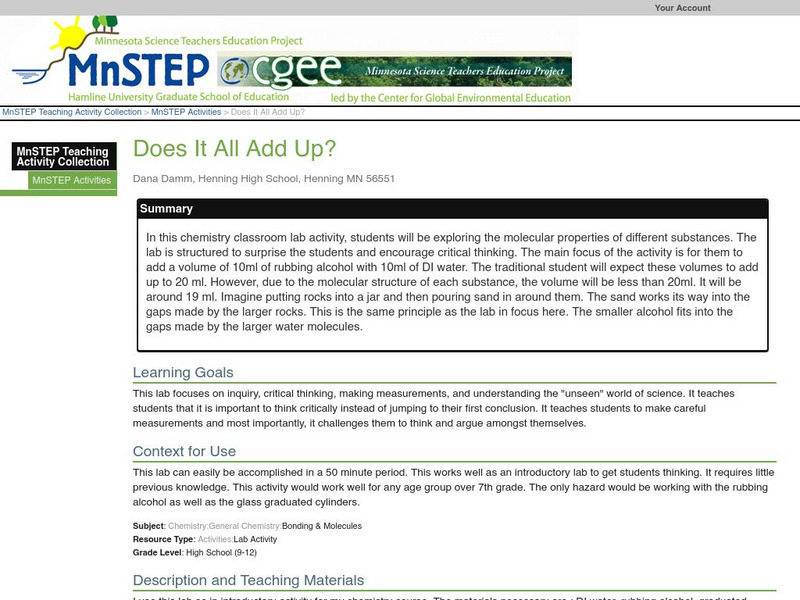Science Education Resource Center at Carleton College
Serc: Coupled Plasma Mass Spectrometer to Teach About Water Chemistry
In this lesson students will use data acquired with an ICP-MS to teach them about water chemistry at a variety of levels.
TeachEngineering
Teach Engineering: Introduction to Water Chemistry
Young scholars are presented with examples of the types of problems that environmental engineers solve, specifically focusing on water quality issues. Topics include the importance of clean water, the scarcity of fresh water, tap water...
American Chemical Society
Middle School Chemistry: Chapter 3: Density
Six interactive chemistry lessons about density complete with handouts and animations.
TeachEngineering
Teach Engineering: Density & Miscibility
After students conduct the two associated activities, Density Column Lab - Parts 1 and 2, present this lesson plan to provide them with an understanding of why the density column's oil, water and syrup layers do not mix and how the...
American Chemical Society
Middle School Chemistry: Chapter 5: The Water Molecule and Dissolving
Nine exemplary chemistry lessons about the water molecule and dissolving complete with handouts and animations.
Science Education Resource Center at Carleton College
Serc: Do Water Molecules Have Space Between Them?
In this chemistry lab, students investigate whether water molecules have any space between them by filling a glass with water, and adding salt without the water overflowing. They will also experiment with the temperature of the water.
Science Education Resource Center at Carleton College
Serc: Making Bath Salts for Mother's Day, a Primary Chemistry Lesson
What do you know about salt? In this chemistry lesson, students will learn different things about salt: the chemical name, it's periodic table number, it's shape under the microscope, how it dissolves in water, and how to make a mixture...
Science Education Resource Center at Carleton College
Serc: Introductory Concepts in Soil Chemistry
In this introductory lab activity, students will collect data that will graphically illustrate the relationship between mass and volume in determining the density in chemistry. Based on density, students will seek to determine a...
Science Education Resource Center at Carleton College
Serc: Determining the Density, P H and Water Content of Various Area Soils
In this chemistry field lab, students will determine the density, pH, and water content of 4 types of soil. Students compare class data and write a lab report describing their results and then analyze their findings to report on the...
Science Education Resource Center at Carleton College
Serc: Classifying Chemical and Physical Changes in Various Materials/substances
For this classroom lab, learners will investigate the characteristics of a chemical change. Students will also provide a definition of what constitutes a physical change through observation of several examples. Learners will use/create...
University of Arizona
University of Arizona: Problemas De Acidos Y Bases
Learn about the solvent properties of water, pH, pKa and buffering capacity with a series of problems. The correct answers for the multiple choices problems are reinforced with a brief explanation and the incorrect answers are linked to...
TeachEngineering
Teach Engineering: The Great Pacific Garbage Patch
The Great Pacific Garbage Patch (GPGP) is an interesting and somewhat publicized environmental problem. A swirling soup of trash up to 10 meters deep and just below the water surface is composed mainly of non-degradable plastics. These...
Science Education Resource Center at Carleton College
Serc: Investigating Precipitation: Snow
For this chemistry field/class based activity, students investigate snow and, more specifically, why snowflakes have six sides. Students will individually fossilize a snowflake and observe similarities and differences with other members...
Science Education Resource Center at Carleton College
Serc: Does It All Add Up?
In this chemistry classroom lab activity, students use critical thinking to investigate the molecular properties of different liquids: rubbing alcohol and water.
Science Education Resource Center at Carleton College
Serc: Mn Step: Solutions: Solubility and Miscibility
For this activity, students will test the solubility and miscibility of various substances in water, and explain the chemistry involved. They will also be given a solid and a liquid and asked to predict what will happen when each is...
Other popular searches
- Lake Water Chemistry
- Water Chemistry Ions
- Co2 Water Chemistry
- Water Chemistry Lesson Plans
- Ocean Water Chemistry
- Basic Water Chemistry
- Water Chemistry Properties
- Storm Water Chemistry
- Marine Water Chemistry
- Size vs. Water Chemistry
- Chemistry of Water
- Water Chemistry Nitrate

